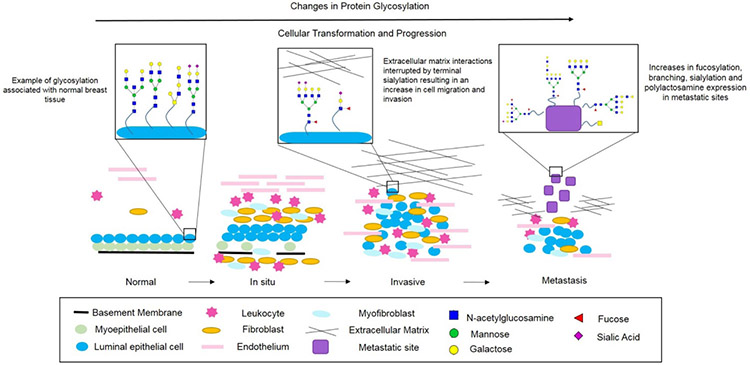Figure 1:
Schematic Overview of Normal, in situ, Invasive and Metastatic Breast Carcinoma Progression. Normal breast ducts contain a basement membrane with a layer of myoepithelial cells and a layer of luminal epithelial cells with various endothelial cells, fibroblasts and leukocytes in the stroma. Glycans on normal breast epithelium are basic bi- and tri-antennary structures typically lacking expression of core-fucosylated structures. As in situ carcinoma develops, the basement membrane begins to degrade and the number of myoepithelial cells decreases. Additionally, the number of stromal immune cells increases. A cancer is considered invasive when the basement membrane is no longer present, allowing the tumor cells to invade surrounding tissues, enter the blood stream and eventually form distant metastatic sites. As a cancer becomes invasive and metastatic, N-glycans expressed display increases in branching, sialylation and fucosylation. Additionally, O-glycans decrease in chain length and the expression of Tn antigen, Thomsen-Friedenreich antigen, sialyl-T antigen and sialyl-Tn antigen increases.

